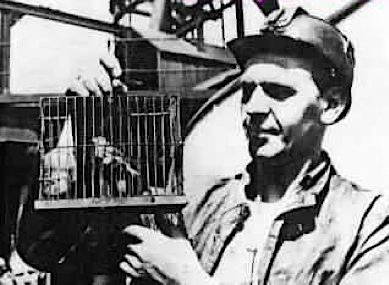According to RAND,
“Community resilience is a measure of the sustained ability of a community to utilize available resources to respond to, withstand, and recover from adverse situations. […] Resilient communities withstand and recover from disasters. They also learn from past disasters to strengthen future recovery efforts. The Resilience in Action website offers toolkits, training, multimedia, newsletters, and other resources to help communities build and strengthen their resilience.”From the above definition we can observe that resilience in this case also includes a community’s ability to learn from the past and become more robust in so doing – a sort of social antifragility.

“a community or region’s capability to prepare for, respond to, and recover from significant multi-hazard threats with minimum damage to public safety and health, the economy, and national security.”Accordingly, the authors identify four major “activities” responsible for the emergence of resilience: anticipation of threats; response to threatening events; disaster recovery; and vulnerability reduction.
It is interesting to note that in this case vulnerability reduction is carried out, so to say, “outside” the system: the greater resilience is reached by strengthening the protection and emergence infrastructures, thus it is not a consequence of a system’s learning processes but rather of the processes of the designers and the managers of the system; it is thus more enhancing elasticity rather than achieving antifragility.
After analyzing weaknesses and strengths of New Orleans and discussing the above major activities, the authors discuss anticipation/response/recovery/reduction before, during, and after Hurricane Katrina. Ongoing and future action to improve the performance of the above activities is reported. Lessons learned are finally summarized.
A remarkable fact observed by the authors is that the response to the disaster was far from ideal:
“Through extensive media coverage, the world saw remarkably inadequate rescue operations, the failure of complete evacuation, […] What amazed many worldwide was that these extensive failures, often attributed to conditions in developing countries, occurred in the most powerful and wealthiest country in the world.”This is particularly surprising in that the severity of the situation was well known, as it was also well known how the New Orleans area would have had difficulties in the face of catastrophic events:
“New Orleans was a catastrophe waiting to happen with extensive and repeated warnings from both scientists and the media that the “big one” would eventually hit the city.”This fact in particular stirred my imagination. I was born in a land rich with seismic and volcanic activity, though considerably less wealthy and powerful, which made it quite obvious to me that it would be preferable to learn about Community Resilience failures in an indirect way.
The major lesson that I derived from this case is that an event like Katrina disrupts several concentric “social layers” at the same time, and that one of the major problems following the event is one of coordination. Multiple concurrent responses are triggered in each of the social layers, including
- the individual, the family, people sharing the same location, citizens, etc.;
- pre-existing organizations of the city, the region, the state, the nation;
- pre-existing organizations for civil protection, defense, order, etc.
Coordination failures derive from a number of reasons, the most important of which are possibly the following ones:
- Conflicting goals and conflicting actions among the triggered responders. Multiple uncoordinated efforts often result in wasting resources and in some cases they mask each other out.
- As a simplistic way to avoid or recover from this kind of failures, institutional responders tend to refuse or do not blend their action with that of informal responders.
- Resources owned by institutional responders are not shared dynamically according to the experienced needs.
“[Responders] would have been able to do more if the tri-level system (city, state, federal) of emergency response was able to effectively use, collaborate with, and coordinate the combined public and private efforts. How to do so, in advance of hazard events, is a central task of enhancing community resilience.”Is it possible to find a satisfactory answer to the above challenge? Which tools, which form of organizations may serve as an effective foundation on top of which community resilience may be built? Let me just focus on the response to the events. The answer, in my humble opinion, should be characterized by the following attributes:
- Scalable: The building blocks of the response organization should be applicable at all social layers, ranging from micro scale (individual or small groups) up to macro level (national or world-wide institutions).
- Fractal: The building blocks of the response organizations should be free from the hard restrictions of pure hierarchical organizations. The action and role of each social layer should not be restricted by its hierarchical level into that of a controller or that of a controlled, but rather dynamically defined.
- Context-driven: The above mentioned action and role should be defined through an assessment of the context and situations at hand, possibly involving multiple collaborating entities and layers.
- Self-servicing: Forms of mutualistic collaboration should be identified so that common requirements may become mutually satisfactory.
- Service-oriented: Services and assets should be easily and quickly localizable, shareable, and accountable.
- Semantic: Services and assets across the social layers should be semantically described in a uniform way allowing for quick service matching.
- Collaborative: Collaboration among entities in different social layers should be easy to settle and result in the spontaneous emergence of new temporary inter-layered “social responders”. Said “social overlay networks” would combine responders of different scale and different originating social layers and exist until some originating purpose is being reached.
- Modular: Self-similar collaborative “patterns”, or modules, should be reusable at different scales. A dynamic ranking mechanism should allow the performance of modules in a given context to be tracked.
My next post will describe an organization matching the above attributes – the fractal social organization.

The Challenges of Community Resilience by Vincenzo De Florio is licensed under a Creative Commons Attribution-NoDerivatives 4.0 International License.
Permissions beyond the scope of this license may be available at mailto:vincenzo.deflorio@gmail.com.







